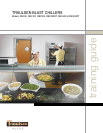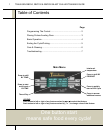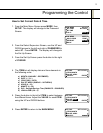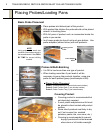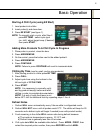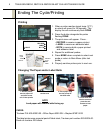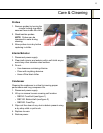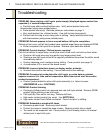
4401 Blue Mound Road, Fort Worth, TX 76106 • (800) 825-8220 •www.traulsen.com
TR35918 (rev. 09/11)
Troubleshooting
7 TRAULSEN RBC50, RBC100 & RBC200 BLAST CHILLER TRAINING GUIDE
PROBLEM: Upon starting a chill cycle, probe temp(s) displayed appear cooler than
expected (i.e. cooked temperature).
a. Product temp within cooked batches vary. Verify actual product temp with
thermometer (using same probed piece).
b. Probe placed incorrectly. Relocate probe per instructions on page 3.
c. Very small product (ex. chicken tender). Use chill by time (see page 4).
d. Product held too long at room temp prior to chilling. Verify actual product temp
with thermometer (using same probed piece).
PROBLEM: Defrost appears to have occured before chill cycle completion.
Defrost will not occur until all food probes have reached target temp and displayed DONE.
a. Chiller completed chill cycle for all probes. Retrieve cycle data after defrost.
PROBLEM: Control displays “Defrost sensor warning.”
Coil did not defrost to target temp, usually the result of too much ice build-up from either:
a. Previous chill cycle was very long and/or very large product load.
b. Starting a new chill cycle close to the regularly scheduled time when the chiller would
automatically defrost.
c. Product releasing much moisture during chilling. Cover product (see page 3).
d. A combination of 2 or more of the above issues.
PROBLEM: Incorrect date/time shown on display and/or printouts.
a. Incorrect time and/or date setting. Correct date and/or time settings.
PROBLEM: Cannot print probe data after chill cycle, or probe data on printout
appears incorrect (i.e. time and/or temperature differ from actual start time and/or
product temperature).
a. Product (probe) added to active chill cycle incorrectly (i.e. failure to press
ADD/REMOVE and/or CONTINUE).
PROBLEM: Product freezing.
a. Previously chilled product not removed and new chill cycle started. Remove DONE
product before starting a new chill cycle.
b. Chill cycle By Time set for too long. Reduce chill time.
c. High water content product (ex. soup). Use SOFTCHILL.
d. High water content food chilled uncovered. Cover food prior to chilling.
PROBLEM: Extended or unsafe chill times.
a. Excessive product load. Reduce product loaded.
b. Product too large or loaded too deep in pans. Reduce product size or depth.
c. Too much ice on evaporator coil. Cover product (if not already) and/or run manual
defrost prior to next chill cycle.
© 2010 Traulsen. All rights reserved.



